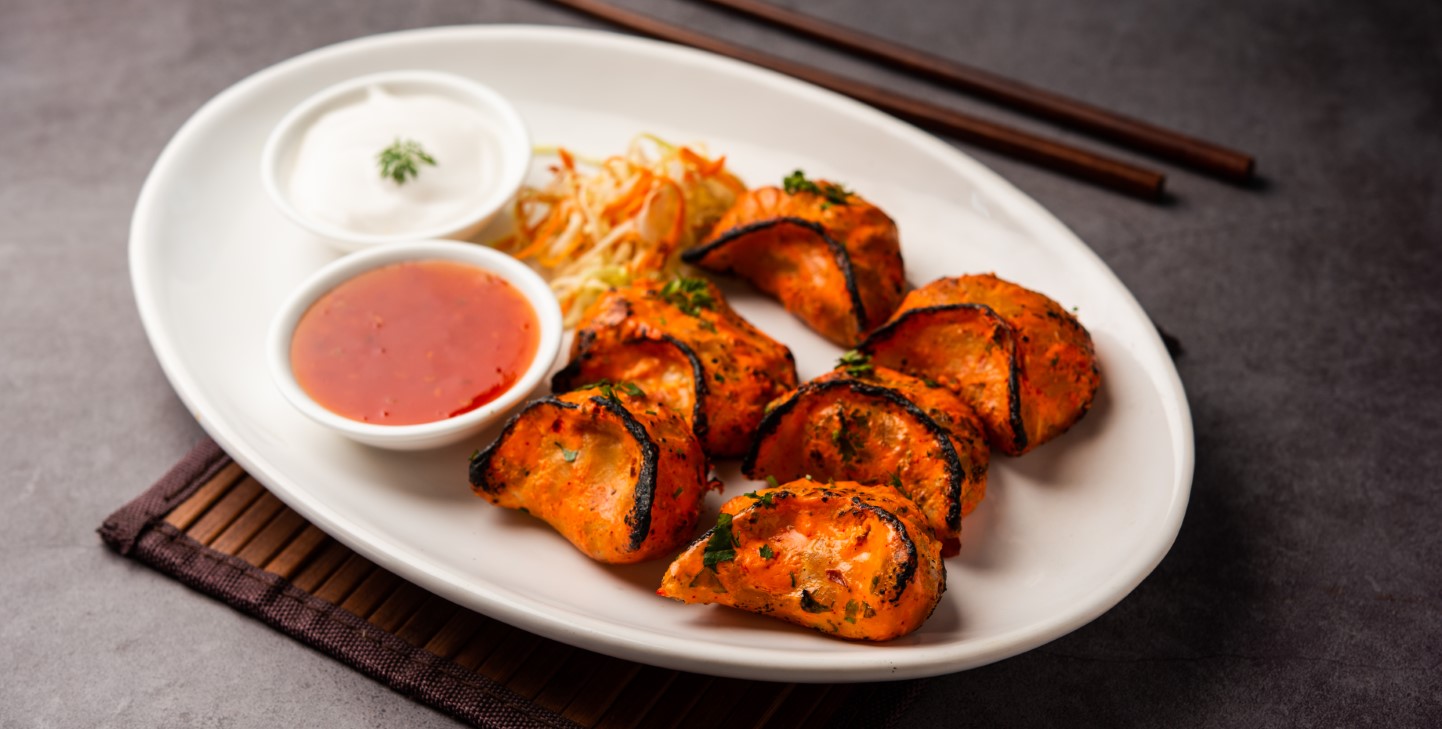A closer look at the significance of Cambodian New Year and a guide to the festivities that take place during this must-see event.
GVI
Posted: May 14, 2023

Petrina Darrah
Posted: May 21, 2023
Nepal is a land of contrasts – towering mountain ranges, lush green valleys, and bustling cities. Its cuisine, too, reflects this diversity, with a rich and varied culinary tradition that draws on influences from India, Tibet, and beyond. In this article, we’ll take a culinary journey through Nepal and explore some of its most beloved traditional dishes.
Perhaps the most famous Nepalese dish is momos, a type of dumpling that originated in Tibet but has become a staple of Nepalese cuisine. These small, steamed or fried dumplings are filled with minced meat or vegetables and are often served with a spicy chutney made with tomatoes, chilies, and coriander. They make a great snack or a light meal, and are a favourite of both locals and tourists alike.
Another popular dish is thukpa, a hearty soup made with vegetables, meat, and noodles. It is typically served hot and is perfect for warming up on a chilly day. The dish varies depending on the region, with some versions including more spice than others. Dal bhat, a staple dish in Nepal, consists of boiled rice, lentil soup, and a selection of curried vegetables or meat. It is served on a large platter, and diners usually eat it with their hands. This dish is a favourite of locals, and it’s easy to see why – it’s nutritious, filling, and delicious.
Other popular Nepalese dishes include sel roti, a sweet fried bread that is often served during festivals, and chatamari, a type of rice pancake topped with meat, vegetables, and spices. Each of these dishes is unique in its own way and reflects the diversity of Nepalese cuisine.

Nepalese cuisine varies greatly by region, with each area having its own unique dishes and flavours. For example, Newari cuisine, which is popular in the Kathmandu Valley, features a wide range of meat dishes, including buff (water buffalo) and yak. It also includes unique dishes such as chhwela, a spicy mix of buffalo meat and mustard oil.
In the mountainous regions of Nepal, where access to fresh vegetables is limited, meat plays a larger role in the cuisine. In these areas, dishes like sukuti, a dried meat curry, and yak stew are popular. Meanwhile, in the Terai region, which borders India, rice and lentil dishes are staples, and spices such as cumin and coriander are commonly used.
Nepalese cuisine uses a wide range of ingredients, including spices, lentils, vegetables, and meat. Spices such as cumin, coriander, and turmeric are commonly used, as well as chilli peppers for heat. Rice is a key ingredient in Nepalese cuisine, and it is often served with curried vegetables or meat. Lentils are also an important component of many Nepalese dishes, providing protein and flavour.
Cooking methods in Nepal vary depending on the dish and the region. Grilling and frying are common in the Terai region, while steaming and boiling are more prevalent in the mountainous areas. In the Kathmandu Valley, where Newari cuisine is popular, dishes are often prepared over an open flame or in a clay oven.
Dining in Nepal is a communal affair, with food being shared among friends and family. Eating with your hands is common, and it is considered impolite to use your left hand while eating. Communal dining is especially important during festivals, when large quantities of food are prepared and shared among the community.
Festivals such as Dashain and Tihar are an important part of Nepalese culture, and food plays a significant role in these celebrations. During Dashain, which is Nepal’s largest festival, families prepare large feasts and offer food to the gods. Tihar, which is also known as the festival of lights, is celebrated by lighting oil lamps and preparing traditional sweets like sel roti and peda.
Volunteering with GVI in Pokhara is an excellent way to experience Nepalese cuisine while also making a positive impact in the local community. GVI offers a variety of volunteering programs that allow participants to immerse themselves in Nepalese culture and cuisine. Volunteers can take part in cooking classes and learn how to prepare traditional dishes like momos and dal bhat. They can also visit local markets and learn about the ingredients used in Nepalese cuisine. Additionally, volunteers have the opportunity to live with a local host family, who will prepare traditional meals for them and offer insights into Nepalese culture and customs. By volunteering with GVI in Pokhara, participants can not only experience the delicious food of Nepal but also make a meaningful contribution to the local community.
Nepal’s traditional cuisine is a reflection of the country’s rich cultural heritage and its diverse landscape. From momos to dal bhat, the flavours and ingredients used in Nepalese dishes are sure to delight any food lover. By exploring the regional variations, ingredients, cooking methods, and dining customs of Nepalese cuisine, one can gain a deeper appreciation for this unique culinary tradition. So, next time you’re in Nepal, be sure to try some of the local cuisine and experience the vibrant food culture of this beautiful country.
By Petrina Darrah

A closer look at the significance of Cambodian New Year and a guide to the festivities that take place during this must-see event.
GVI
Posted: May 14, 2023